Background on the FARC (and Remembering the FARC’s Terrible, Horrible, no Good, very Bad Year+)
The seeds of the current peace deal date back to 2007-2008 (plus some longer-term background notes).
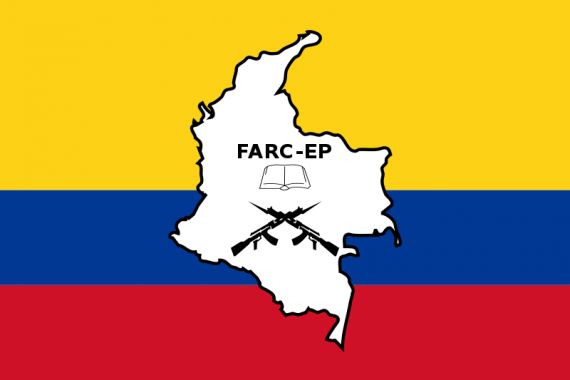 To understand both the magnitude of the peace process progress I noted earlier today, it is worth pointing to some basic history of the FARC as well as to recent events that help bring the parties to the negotiating table in the first place.
To understand both the magnitude of the peace process progress I noted earlier today, it is worth pointing to some basic history of the FARC as well as to recent events that help bring the parties to the negotiating table in the first place.
First, while the FARC was officially founded in 1964, it’s roots stretch back to the 1920s and peasant movements linked to the Colombian Communist Party (Safford and Palacios 2002, 355-375) as well as guerrilla movements linked to the Liberal Party in the 1940s/50s during the Colombian civil was known as La Violencia. Indeed, the FARC’s founder, Pedro Marín (aka, Manuel Marulanda, aka Tirofijo) first started fighting as a Liberal irregular.
Second, the FARC was able to fund its revolutionary fight by tapping into the drug trade for over half its existnece–a formal decision it made in the early 1980s. It also started to increasingly use kidnapping as a funding source (which ultimately did not help its popularity with the general Colombian population).
Third, as part of a peace process in the 1980s there was an attempt at creating a left-wing political party, the Patriot Union:
However, the entry of this new party into civil life was hardly a smooth one. Between the 1986 elections and the 1988 elections (for local offices and the first for mayors), “more than 500 militants and leaders” were killed, including the aforementioned Pardo and “two senators, two representatives, five deputies, 45 councillors anf four mayors” (Santana n,d., 2). Despite the violence, the UP participated in the 1988 elections and went on to win fifteen 15 mayoralties outright, and collaborated in the election of 105 others.
The UP continued to offer candidates, but the attacks also continued, and the death toll mounted. To read the history of the UP through journalistic and other accounts is to see a gruesome tally grow with each subsequent article. In 1987 the number killed was 450, by 1988 it was 550, by 1993 the death toll was 1,163, and a 1994 estimate put it at 2,341. By 2004 the number was at least 3,300, with other estimates going from 3,500 to 4,000. In short, it was, as the UP and others have called it, a “political genocide” (e.g., Cepeda C. 2006, García-Peña 2007, fn6).
Source: Taylor 2009, 153.
The violence aimed at the UP certainly made talks basically impossible for some time since entry into civil politics seemed to promise nothing but assassination (not something that would induce guerrillas to lay down arms).
Fourth, the last major attempt at peace talks with the FARC was 1999-2002 during which time a Switzerland-sized portion of the Colombian countryside was ceded to the FARC as a demilitarized zone. That entire process was an utter disaster.
Fifth, the pinnacle of the FARC’s power was in the first decade of this century:
By the middle of the 2000-2010 decade the FARC was estimated to have a fighting force of approximately 17,000––20,000 and an annual income of roughly $900 million (as of 1999), which it secures via links to the drug trade and to kidnapping (Bagley 2005, 29––30; Ramírez, Clemencia, Stanton and Walsh et al. 2005, 110). The FARC has been involved in numerous negotiations with the government over the years, to ultimately to no avail.
Source: Taylor 2009, 141.
Sixth, however, the tide started to shift in 2007. The following is a timeline from some of my research notes that underscores how things started to significantly change for the FARC:
FARC Timeline 2007-2008
January 2007: Former Development Minister Fernando Araujo escapes after 6 years in captivity.
May 2007: Jhon frank Pinchao, a policeman, escapes after 8.5 years in captivity.
July 2007: Eleven hostages (all politicians) were accidently killed by the FARC when two cells attacked one another by mistake.
September 2007: A female rebel hijacks a plane to escape her “tortuous life” with the FARC
Dec 07/Jan 08: FARC is embarrassed by the fact that a child it claimed to hold ends up not to have been under their control.
January 2008: FARC releases two high profile hostages (Clara Rojas and Consuelo Gonzalez)
February 2008: Massive anti-FARC protests in Bogota and in 100 cities around the world.
February 2008: Raul Reyes, a member of the FARC’s secretariat killed in raid over the border into Ecuador. 17 total rebels were killed, including Guillermo Enrique Torres aka Julian Conrado, whom Colombian government officials called a key ideologist for the FARC.
March 2008: March 7. Ivan Rios, a member of the FARC’s ruling secretariat killed by one of his subordinates, who then turns himself in for the reward.
Pedro Antonio Marin, aka Ivan Marulanda Velez, aka Tirofijo, dies. (This is not made public until May).
May 2008: May 8. Another FARC commander, Gustavo Arbeláez (aka Santiago) captured in a separate situation. Santiago was the presumed commander of the urban front called Manuel Cepeda Vargas and was implicated in the kidnapping of 12 diputados in Valle in 2002 (11 of whom died in July 2007, see above).
May 11. El Tiempo reports that men under the command of El Mono Jojoy tried to kill him for the reward that had been offered.
Nelly Avila Moreno, aka Karina, surrenders to authorities. Along with Karina, a FARC guerrilla known as Michin surrenders with her. Karina had been under the command of Ivan Rios and had taken over for him after his death.
Late in May it is revealed by the Defense Minister (and later confirmed by the FARC) that Tirofijo died in March.
July 2008: Ingrid Betancourt, three Americans and 11 other hostages are freed in a daring rescue by the Colombian military.
July 2008: A FARC operative in Europe, Maria Remedios Garcia Albert, was arrested in Spain.
The cumulative effect is remarkable. I would especially note the February 2008 attack of a FARC base in Ecuador (the death of Reyes and the intelligence gathered were both huge) and the rescue of Ingrid Betancur and other key hostages in July of 2008.
While it is true that there are elements of the FARC’s political agenda that have some resonance in sectors of Colombian society, it is also the case that the FARC itself is not popular in Colombia (another reason to seek a negotiated settlement, as the FARC’s goal of revolutionary change has always been fantastical in nature). Still, it is worth noting that the FARC has been able to provide services to parts of Colombia where the state has been all but absent. Further, the state has not been innocent when it comes to human rights abuses. Hopefully the current process will lead to real justice and reconciliation as well as a better state presence in the frontier regions of Colombia
—
Works Cited
Bagley, Bruce M. 2005. “Drug Trafficking, Political Violence, and U.S. Policy in Colombia under the Clinton Administration.” in Elusive Peace: International, National and Local Dimensions of Conflict in Colombia. Cristina Rojas and Judy Meltzer, eds. New York: Palgrave Macmillan.
Cepeda Castro, Iván. 2006. “Genocidio Político: el Case de la Unión Patriótica en Colombia.” Revista Cetil. 1,2 (September): 101-112.
García-Peña, Daniel. 2007. “Colombia: In Search of a New Model for Conflict Resolution.” in Christopher Welna and Gustavo Gallón , eds. Peace, Democracy, and Human Rights in Colombia. Notre Dame: University of Notre Dame Press.
Ramírez Lemus, María Clemencia, Kimberly Stanton and John Walsh. 2005. “Colombia: A Vicious Cycle of Drugs and War.” in Drugs and Democracy in Latin America: The Impact of U.S. Policy, Coletta Youngers and Eileen Rosin (eds.). Boulder, CO: Lynne Rienner Publishers.
Santana, Julio. Undated. “Reseña sobre la Union Patriótica.” Document from the Patriot Union’s Office of the Press.
Safford, Frank and Marco Palacios. 2002. Colombia: Fragmented Land, Divided Society. New York: Oxford University Press.
Taylor, Steven L. 2009. Voting amid Violence: Electoral Democracy in Colombia. Boston: Northeastern University Press.

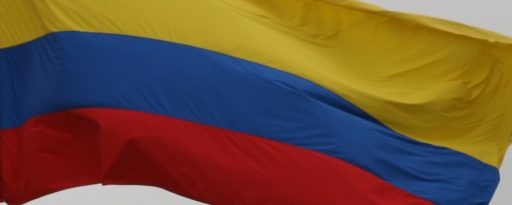
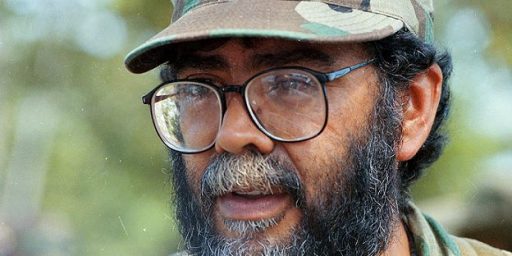
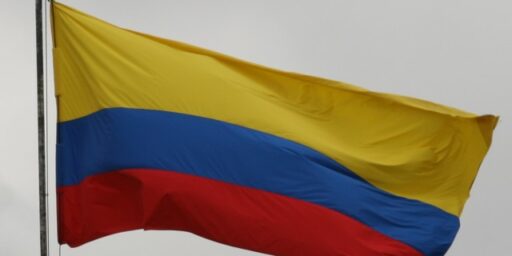
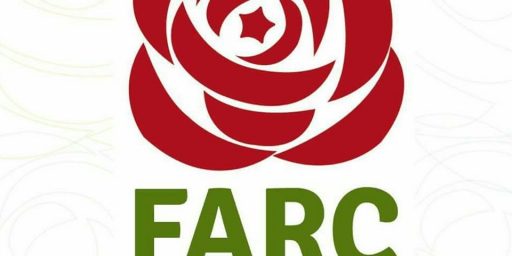
Thank you Stephen, I hadn’t been paying much attention to this issue.
Wonder if the decline in US cocaine consumption had an effect. Here’s to hoping every one sticks to the agreement.
I always thought that the war in Colombia was trilateral with the drug cartels playing a big role since they had money, guns, and people willing to use guns. Have the Cartels been neutralized? What are the narcotraficantes doing these days?
Colombia to me seemed a laboratory for analyzing Weberian ideas of governmental legitimacy. Of course, we now have Syria/Iraq to see these things play out.
@walt moffett: In truth, the money from cocaine persists. This means that even this agreement will not solve all the problems of violence.
I will not be surprised if a rump FARC persists using drugs to continue operating a la Sendero Luminoso in Peru.
@Slugger: The massive cartels of the 80s and 90s have given way to smaller groups.
Also: some of the larger management of the cocaine trade has shifted to Mexico.
Regardless, the drug business is not gone, and this deal will not mean the end of violence, but it will be an improvement over the status quo.
No, really?
(It’s amazing how many Americans think that revolutionary communist militants just happen, somehow independent of the regime they exist to fight…)